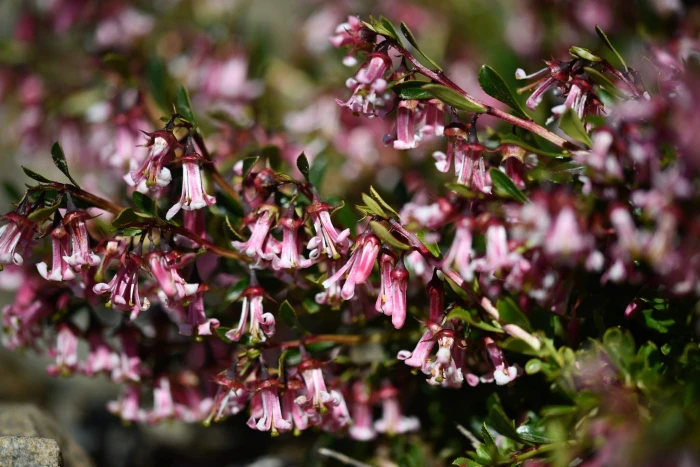Alpine Escallonia
(Escallonia alpina)
Alpine Escallonia (Escallonia alpina)
/
/

© Flavien Saboureau
CC BY 4.0
Image By:
© Flavien Saboureau
Recorded By:
Copyright:
CC BY 4.0
Copyright Notice:
Photo by: © Flavien Saboureau | License Type: CC BY 4.0 | License URL: http://creativecommons.org/licenses/by/4.0/ | Uploader: flaviensaboureau | Publisher: iNaturalist |
























Estimated Native Range
Climate Requirements
| • Precipitation | 8" - 99" |
| • High Temp. | 51°F - 87°F |
| • Low Temp. | 15°F - 43°F |
Summary
Escallonia alpina, commonly known as Alpine Escallonia, is an evergreen shrub native to the Andean cloud forests of South America, particularly in countries like Chile and Argentina. This species thrives in cool, moist, and high-altitude environments, often found at elevations between 1,000 and 3,000 meters. Alpine Escallonia typically grows at a moderate rate to a height and width of 2-3 feet (0.6-0.9 meters), forming a dense, rounded shape. It features glossy, dark green leaves and clusters of small, pink, tubular flowers that are quite showy and bloom in the summer, attracting pollinators such as bees and hummingbirds.
Alpine Escallonia is valued for its hardiness, evergreen foliage, and the splash of color provided by its flowers. It is often used in gardens for border planting, as a low hedge, or in mass plantings for ground cover. This shrub is adaptable to a range of soil types, including clay, loam, and sandy soils, as long as they offer medium to fast drainage. While it prefers full sun or part shade, it also requires protection from harsh afternoon sun in hotter climates. Regular watering is necessary, but the plant is somewhat drought-tolerant once established. Alpine Escallonia is generally disease-resistant, but it can be susceptible to root rot if overwatered or planted in poorly drained soils. It is not known to be invasive outside its native range.CC BY-SA 4.0
Alpine Escallonia is valued for its hardiness, evergreen foliage, and the splash of color provided by its flowers. It is often used in gardens for border planting, as a low hedge, or in mass plantings for ground cover. This shrub is adaptable to a range of soil types, including clay, loam, and sandy soils, as long as they offer medium to fast drainage. While it prefers full sun or part shade, it also requires protection from harsh afternoon sun in hotter climates. Regular watering is necessary, but the plant is somewhat drought-tolerant once established. Alpine Escallonia is generally disease-resistant, but it can be susceptible to root rot if overwatered or planted in poorly drained soils. It is not known to be invasive outside its native range.CC BY-SA 4.0
Plant Description
- Plant Type: Shrub
- Height: 2-3 feet
- Width: 2-3 feet
- Growth Rate: Moderate
- Flower Color: Pink
- Flowering Season: Summer
- Leaf Retention: Evergreen
Growth Requirements
- Sun: Full Sun, Part Shade
- Water: Medium
- Drainage: Medium, Fast
Common Uses
Bee Garden, Border Plant, Hedges, Low Maintenance, Potted Plant, Showy Flowers
Natural Habitat
Native to Andean cloud forests at elevations between 1,000 and 3,000 meters
Other Names
Common Names:
Scientific Names: Escallonia alpina, Escallonia araucana, Escallonia britteniana, Escallonia fonckii, Escallonia fonckii var. araucana, Escallonia misella, Escallonia sparsiflora
GBIF Accepted Name: Escallonia alpina